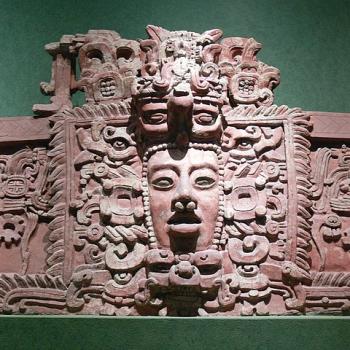
Zoroastrianism is an ancient religion first established in Persia, today known as Iran. It is built on the teachings of a prophet called Zarathustra, who lived c. 1200 B.C. In Greek, his name is pronounced Zoroaster.
The Avesta, which is Zoroastrianism’s sacred scripture, tells all that is known about the prophet. According to its teachings, Zarathustra was born into nobility, in a polytheistic Aryan culture. At 30-years of age, he had a vision that led him to reject the polytheistic gods of his upbringing, and to worship only one God—Ahura Mazda (whose name means “wise Lord” or “lord of wisdom”). This singular focus injected elements of monotheism into the reigning polytheistic religious culture of Zarathustra’s day and, at first, it was strongly rejected. Zarathustra’s message also insisted that Ahura Mazda demanded ethical behavior rather than animal sacrifices. Thus, ancient Zoroastrian sources referred to it as the “good religion”—meaning it was a religion which commanded “good” of its adherents.
While Zarathustra faced great opposition, he continued to preach his message and gradually gained followers. By the 5th century B.C.E., Zoroastrianism had become the major religion of Persia, and remained so through several centuries. Indeed, at one point, it spanned much of Asian, Africa, and Europe. It would wax and wane in popularity as it encountered the infiltration of Greek religious concepts under Alexander the Great in the 4th century B.C. and then Christian elements after the first century A.D. The Muslim conquests of the 7th century put more pressure on Zoroastrians, but the religion lingered. In the 9th and 10th centuries, many Zoroastrians migrated south, seeking refuge in Gujarat, a state in western India where Zoroastrianism remains a small but vital community even today. There they are largely known as Parsis (which means “Persians”).
Many scholars believe Zoroastrianism influenced religious thought in both Judaism and early Christianity. It shares with them a devotion to one god, a promise of heaven and threat of hell, a day of judgment, and the vital importance of ethical behavior. While it presents as a monotheistic religion, it has a dualism at its core in a way that is unlike either Judaism or Christianity. One of its core teachings is that there is an eternal cosmic struggle between good and evil, between darkness and light, which will never entirely resolve.
The devout believer is called to choose goodness, to choose the light. The evil one is called Angra Mainyu, and he (and his minions) forever oppose Ahura Mazda, and seek to draw us to them. We much choose God (Ahura Mazda, and his advocate, Spenta Mainyu) or the evil Angra Mainyu. Zoroastrianism does not explain the source of this evil entity, but it teaches that the world is full of both good and evil spirits who constantly push and pull on human souls. Each Zoroastrian recognizes the dominating ethical and spiritual counsel to practice good thoughts, good words, and good deeds. These will preserve the individual in the way of Ahura Mazda and guarantee mercy on the day of judgment. Practicing Zoroastrians wear a white linen undershirt with a small pocket at its neckline. This pocket is often referred to as the “bag of righteousness” or “purse of righteousness”—and each day one is to metaphorically fill that bag or purse with good thoughts, good words, and good deeds—thereby aligning one’s will with Ahura Mazda.
Zoroastrians are expected to pray five times a day. Their prayers are typically said while standing, facing the sacred fire—a symbol of God. The Avesta, Zoroastrianism’s sacred writings, contain the Gathas, 17 hymns written by Zarathustra, and used as the text of Zoroastrians’ prayers. The Gathas are the liturgical source of Zoroastrian worship. The Avesta also includes epic narratives, rituals, and laws to guide the Zoroastrian community.
Temples in which Zoroastrian’s worship are called fire temples because fire is a central symbol of purification. Each temple has a central fire burning that is maintained without interruption. Another widely recognized symbol is the Faravahar, which depicts a male winged figure with a ring around his waist, having three layers of feathers above the ring and three layers below—traditionally representing good thoughts, good words and good deeds, as opposed to bad thoughts, words, and deeds. Many believe that the male figure represents Ahura Mazda himself.
Compare Zoroastrian thought with Islamic teaching on the nature of God.
3/14/2023 6:59:56 PM










